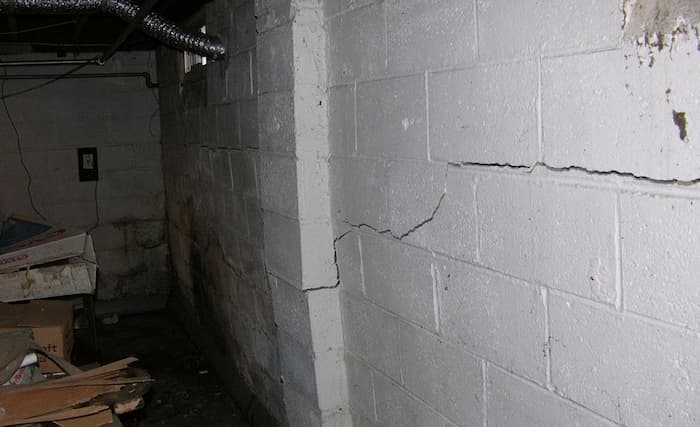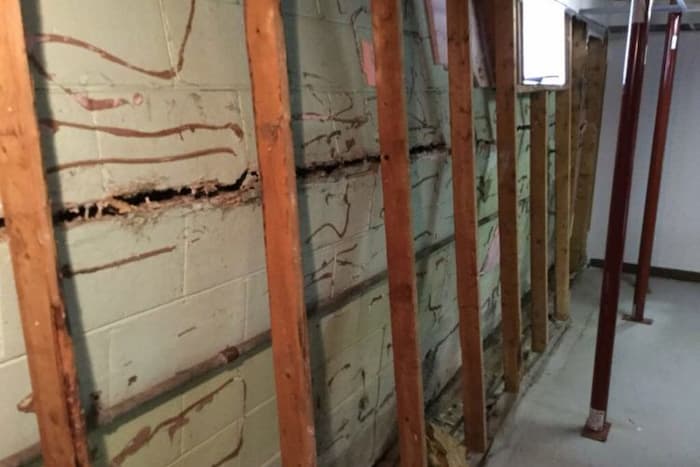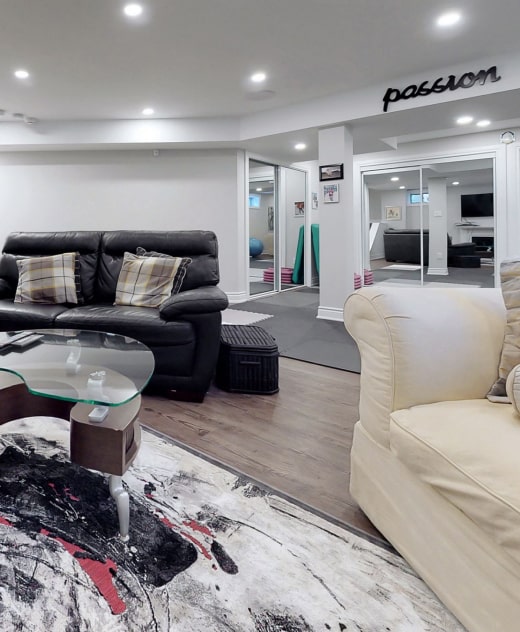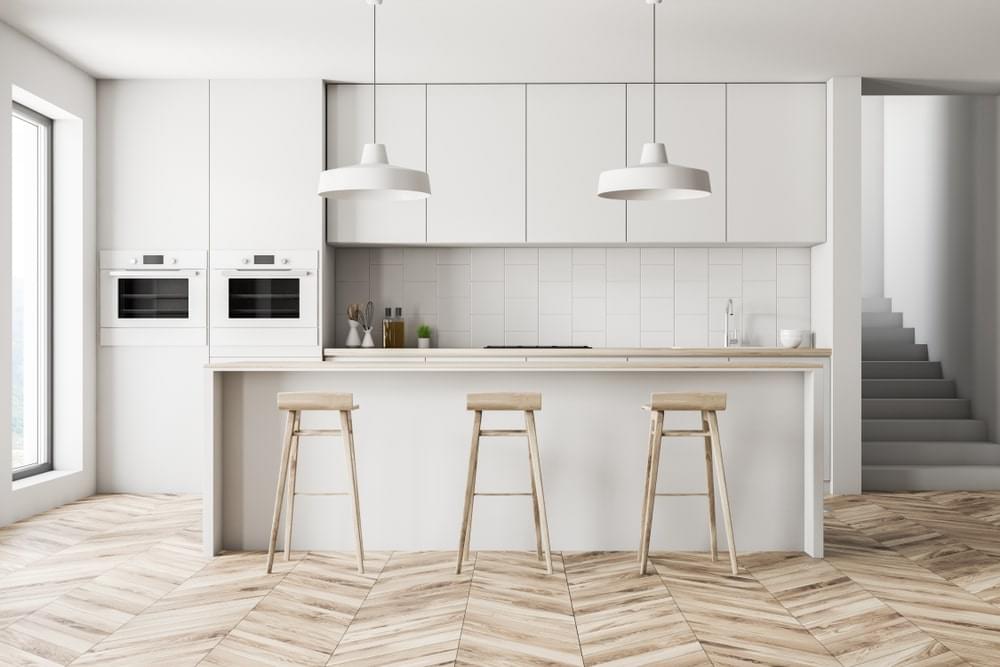How to Fix a Basement Wall that Is Bowing in
A bowed basement wall is usually curved from the outside to the inside. To identify such, look for a bulging wall that forms a convex shape. The problem with bowing basement walls is usually referred to as inward deflection.
A basement wall exhibiting signs of bowing may also be cracked, indicating a potential need for a basement renovation. The cracks could be horizontal or vertical. The cracks tend to open up more when it rains and contract during the hot weather.

What Causes Basement Walls to Bow in?
Basement walls start bowing in when the house’s foundation starts curving inwards. The main reason behind this is excessive external pressure from the surrounding soil and rocks. When the walls can’t withstand this pressure, that’s when they start forming a bow.
The three most common causes for bowed basement walls are:
- Freezing soil
The presence of a large portion of ice in the soil causes it to expand and push against the basement wall causing bowing.
When it gets hot, the soil shrinks leaving a void that could also cause the walls to crack.
- Heavy objects
When you place very heavy items like cars on the ground above the basement walls, their weight pushes the soil downwards and outwards. Over time, they cause the basement walls to bow.
- A clay soil base
Clay soil expands and contracts easily depending on the weather conditions. When it rains, the moisture content in the soil increases causing it to expand. When it’s dry the moisture content reduces causing it to shrink. This repeated expanding and shrinking results in pressure differences and ultimately results in bowed basement walls.
How to Prevent Basement Walls from Boing
As a homeowner, it’s very easy for you to put preventative measures in place to protect your basement walls. To do so, put the following into practice:
- Install a drain that catches groundwater and prevents it from penetrating the surface
- Fix damaged gutters that cause water to form pools near basement walls
- Move heavy items further away from areas above the basement
- Remove soils that expand and contract easily from around the basement walls. Replace clay soil with sandy soil

Assessing Bowed Basement Walls
Before you start repairing bowed basement walls, you need to assess the level of damage. This way you get a rough idea of how much time and money it’ll cost. Part of the assessment involves measuring the degree of deflection. To do this you need a ruler and a weighted string.
Follow these simple steps:
- Identify a bowed section on the wall
- Hold the weighted string against the wall, from the ceiling to the floor
- Have someone else use a ruler to measure the distance between the string and the most inward section
- The measurement you get is the deflection distance
If the distance is less than 2 inches, that’s a minor deflection and can be left alone. If it’s between 2 to 4 inches, you can easily repair it using the methods we discuss in the next section. However, if the deflection distance is more than 6 inches, it means that the wall needs replacement.
How to Repair Bowed Basement Walls
Are bowed basement walls repairable? Fortunately yes, it’s possible to salvage bowed basement walls. If bowed walls are left unfixed, they could develop cracks and eventually fall apart. That’s why it’s important to repair a bowing basement walls as soon as you notice the bulge. Here are the different methods as explained below:
- Using wall anchors
This is the most commonly used way of fixing bowed basement walls. It makes it possible for the pressure to be evenly spread out, hence minimizing the downward stress to the walls. Anchors are an effective and permanent solution.
- Using force wall braces
This method puts to use a brace to counter the external pressure on basement walls. Some of the different types of wall braces used include straps and beams. Both options run vertically from the top to the bottom.
Straps are attached to the inside of the basement wall and no digging is required. Beams, on the other hand, are bolted to the house joists at the top and into the floor at the bottom.
- Using carbon fibers
This material doesn’t break or stretch. This makes it an ideal solution for repairing cracked bowed basement walls. Using carbon fibers has become quite popular as it stabilizes walls with minimal disruptions – no excavation is needed.
Know When to Call the Experts
If you don’t know how to fix a basement wall that’s bowing in, you need not worry. Call +1 (647) 428-0007 to get professional help. CSG Renovation is your best bet when it comes to repairing or replacing bowed basement walls because they specialize in this kind of work.
When you fix a basement wall, you avoid other problems that are a result of the cracks. These include mold, stains, and water leaks.
In addition, consider ideas for renovations to your basement.






